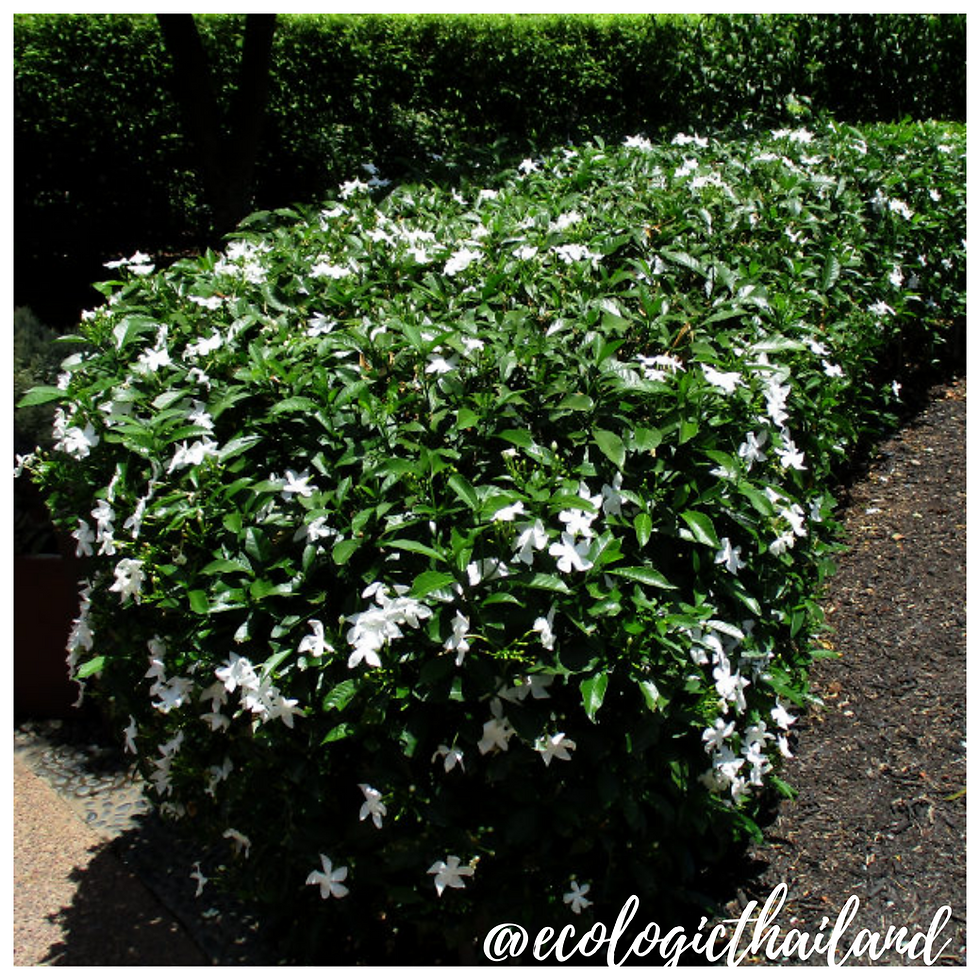Parrot's Beak | False bird of paradise
- Eco-Logic Resort
- Mar 8, 2021
- 2 min read
Thamraksa | ธรรมรักษา | Heliconia psittacorum
Family: Heliconiaceae - Genus: Helioconia

These beautiful flowers can be found on the premises of TCDF and Eco-Logic near the restaurant area and the accommodation.
The parrot's beak, also known as parakeet flower, parrot's flower, parrot's plantain and false bird-of-paradise, is a perennial herb Unlike most species of plants that require the use of pollinators for pollination the Parrot's beak naturally prefers the absence of pollinators for pollination, because it is well capable of pollinating itself. The flower has both male parts (anthers) and female parts (stigma and pistil).
The flowers can be red, orange, yellow, or green The fruits are blue to blue-purple when ripe.
The plant blooms the whole year through.

THE PLANT
An erect perennial herb, quickly growing to three feet tall.
These plants range from 0.5 to nearly 4.5 meter tall, depending on the species.

THE LEAVES
The simple leaves of these plants are 15–300 centimeter. They are characteristically long, oblong, alternate, or growing opposite one another on nonwoody petioles often longer than the leaf, often forming large clumps with age.

THE FLOWERS
Parrot's Beak flowers are produced on long, erect clusters, and consist of brightly colored, waxy bracts, with small true flowers peeping out from the bracts.
The flowers can be hues of reds, oranges, yellows, and greens, and are subtended by brightly colored bracts.

THE FRUIT
Fruits are blue-purple when ripe and primarily bird dispersed.
CULINARY USES
The rhizome of the heliconia plants are said to be edible, but no information on this was found.
TRADITIONAL MEDICINAL USE
NOTE: please take advice from a doctor if you are planning to use herbal medicine.
No information on medicinal use was found.
INTO THE WILD: a down to earth experience

For guests and visitors to Paksong we organize weekly tours "The Edible Forest" and Foraging weekends: Into the Wild. We work with local guides to take you in the jungle of Paksong. After foraging, we will cook a meal with the ingredients, using bamboo together with you!
Come and join and learn about the abundance of food that nature gives us!
INTO THE WILD!


















Comments